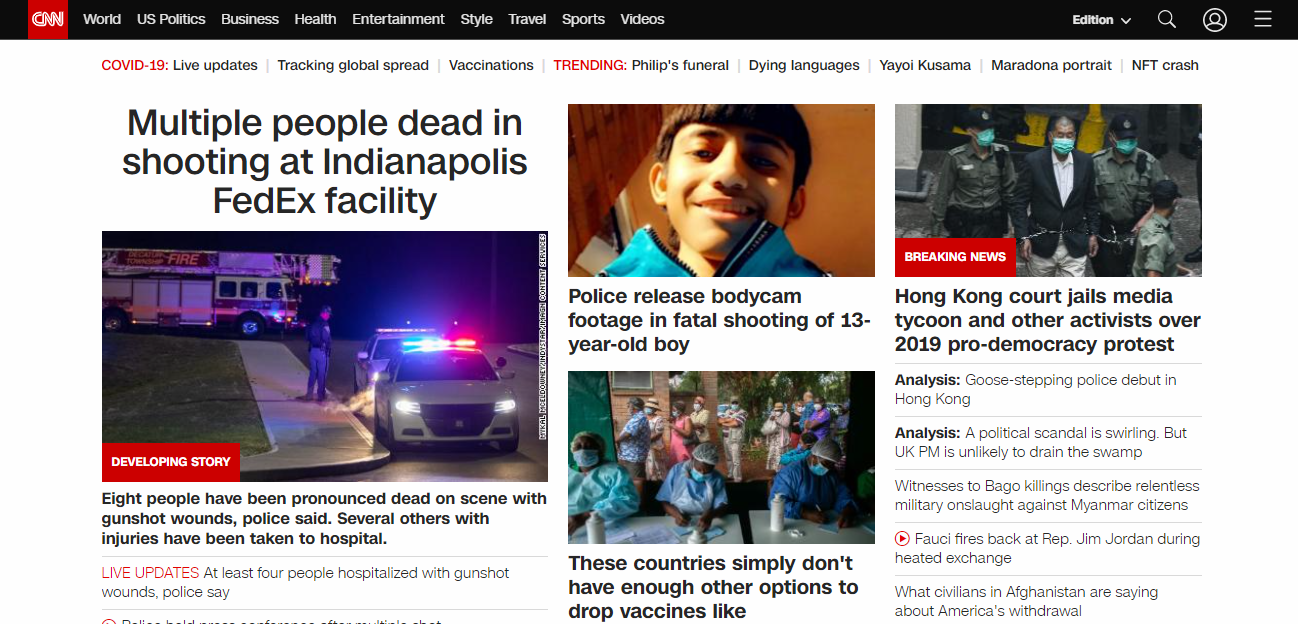Mass media refers to media technologies used to disseminate information to a wide audience. The key function of mass media is to communicate various messages through television, movies, advertising, radio, the internet, magazines, and newspapers.
In this article, we’ll review the importance of mass media, explore the functions, types, and characteristics of mass media, and see several examples.
Why is mass media important?
Your favorite movies on streaming services like Netflix, Hulu, and Amazon Prime Video, news on TV and radio, and articles in newspapers and magazines make mass media an integral part of our everyday life. Since it has a vast influence on people all over the world, brands use various platforms to appeal to their leads and customers and pitch their goods.
Companies run an endless marathon to reach success with the help of mass media. Brands use either traditional or digital media to connect with their target audience and build brand awareness. Entrepreneurs consider various platforms to convey a company’s image and create a good reputation. With mass media, brands can effectively promote their goods and services, reach broader audiences, boost brand engagement, and increase sales volume.
Now that you know about the importance of mass media technologies, let’s proceed to their functions.
Functions of Mass Media
Mass media in written, spoken, or broadcast forms has a significant impact on the masses. Commercials on TV, billboards, and social media platforms allow brands to build brand awareness. Companies search for the most effective ways to convey their message when it comes to branding, including sites, social media channels, blogs, and forums. When they find the right type of mass media channel for their businesses, they can communicate their ideas and conduct branding campaigns.
Mass media informs, educates, and entertains people in a wide variety of ways. Brands can educate users to get the most out of their products. The majority of companies now use social media platforms, create blog posts on their sites, and launch commercials on YouTube to describe their best features, the problems their products can solve, and provide step-by-step guides.
Now that we have cleared that up, it’s time to explore the characteristics.
Characteristics of Mass Media
Over the years, the impact of mass communication has increased drastically because of the improvements made. Hence, it’s crucial to know the main characteristics of mass media, and they are as follows:
- it can appeal to a wide target audience;
- it communicates a public message;
- there’s a distance between a source of information and those who obtain it;
- it can be transmitted through various channels, such as TV, the internet, radio, and newspapers;
- it has a heterogeneous audience;
- news or information communicated through TV, radio, and print media can’t receive feedback.
It’s essential not only to know these features but also to be aware of mass media types, so let’s jump into the next section.
Types of Mass Media
Books, newspapers, radio, social media platforms, booklets, and streaming services are various forms of mass media. However, we distinguish four main types of mass media.
- Print media. It can range from billboards to coupons and is one of the easiest and oldest ways to reach the masses. Originally, print media referred to newspapers, which were the primary sources of information. Further, this type of media expanded to journals, books, and magazines.
- Outdoor media. Ambient marketing is an excellent example of modern outdoor media. Brands use unusual locations and items to promote their products. Let’s take Folgers, for instance. This brand of coffee used manhole covers to promote coffee in a unique and eye-catching way. Therefore, places like bus stops, public transport, and buildings can serve creative companies as places for promotion.
- Broadcasting media. With the help of an electronic broadcasting medium, audio and video content is distributed to a dispersed audience. Television, radio, video, and games appeal to heterogeneous audiences, people who differ in age, background, views, goals, and interests.
- Digital media. There are around 4.66 billion active internet users worldwide in 2021, which means that the world is dependent on digital media. Today, brands promote their goods and services through sites, YouTube, podcasts, and more. Besides, companies often implement Instagram marketing and Facebook advertising to pitch their products.
Now that you know the types, it’s also important to grab some inspiration from several examples.
Examples of Mass Media
Nowadays, when there are many channels, companies can reach customers really fast. Platforms used for different purposes allow firms to appeal to a wide audience and communicate the necessary message. Let’s consider the most popular international news companies people read regularly.
USA Today
It is an American daily middle-market newspaper that is distributed internationally. It delivers the latest local and national news. Besides, USA Today updates people on sports, entertainment, money, and travel. The newspaper has approximately 21 million downloads on mobile devices.

CNN
CNN is a multinational news-based pay television channel. People can find the latest breaking news and information on the business world, politics, weather, and more in the US and the world.

To conclude, mass media technologies enable companies to reach the masses and communicate specific messages. However, you should remember to choose the right channels with the largest audience and select suitable forms.
Resources:
- This article defines the term, explains the types and their influences, and provides several examples.
- This article covers the role and influence of mass media.
Last Updated: 05.09.2024

or